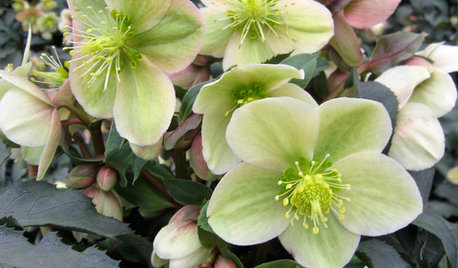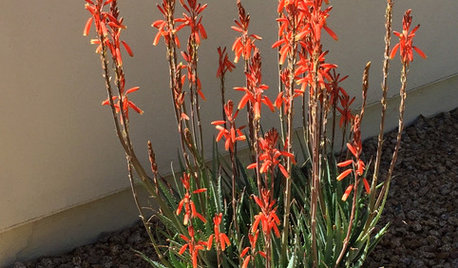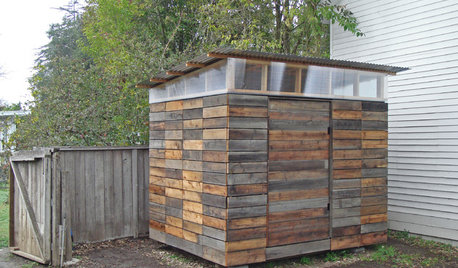F1, F2, Hybrids etc...
esox07 (4b) Wisconsin
12 years ago
Related Stories

MAN SPACESA Los Angeles Basement Becomes a Cozy Man Cave
Raw storage space in a Hollywood writer's home is transformed into a masculine home office hybrid
Full Story
HOMES AROUND THE WORLDEast Meets West in 3 Modern Japanese Homes
Contemporary Japanese houses often mix traditional and Western elements. These hybrids offer the best of both worlds
Full Story
KITCHEN DESIGNTake a Seat at the New Kitchen-Table Island
Hybrid kitchen islands swap storage for a table-like look and more seating
Full Story
WINTER GARDENINGGreat Design Plant: Gold Collection Hellebores Perform Like Stars
Exciting colors, longer bloom times, forward-facing flowers ... These hybrids leave old hellebores in the dust
Full Story
GARDENING GUIDESGreat Design Plant: Aloe ‘Blue Elf’
This compact, sun-loving aloe hybrid thrives where many aloes don’t
Full Story
STORAGE2 Weeks + $2,000 = 1 Savvy Storage Shed
This homeowner took backyard storage and modern style into his own hands, building a shed with reclaimed redwood and ingenuity
Full Story
HOUZZ TOURSMy Houzz: 2 Tools + 1 Resourceful Guy = Lots of Great ‘New’ Furniture
With scrap wood and a hands-on attitude, a San Francisco renter on a tight budget furnishes his bedroom and more
Full Story
HOUZZ TOURS13 Character-Filled Homes Between 1,000 and 1,500 Square Feet
See how homeowners have channeled their creativity into homes that are bright, inviting and one of a kind
Full Story
FUN HOUZZWhat Could You Imagine With Lego's New Architecture Kit?
Go ahead, toy around with wild building ideas. With 1,210 all-white blocks at your disposal, it's OK to think big
Full Story
DECORATING GUIDESHouzz Tour: 2 Weeks to an Apartment Transformation
Speedy didn't mean skimpy for this couple's Santa Monica rental, thanks to a designer who thrives on tight deadlines
Full Story






smokemaster_2007
esox07 (4b) WisconsinOriginal Author
Related Professionals
Simpsonville Landscape Architects & Landscape Designers · Windham Landscape Architects & Landscape Designers · West Milford Landscape Architects & Landscape Designers · Birmingham Landscape Architects & Landscape Designers · Brockton Landscape Contractors · Brownsville Landscape Contractors · Kahului Landscape Contractors · Longmont Landscape Contractors · Manhattan Landscape Contractors · Middle River Landscape Contractors · Quincy Landscape Contractors · Santa Maria Landscape Contractors · Weymouth Landscape Contractors · Sun Valley Landscape Contractors · Baileys Crossroads Landscape Contractorsrick_in_va
esox07 (4b) WisconsinOriginal Author
tsheets
smokemaster_2007
habjolokia z 6b/7
nc_crn
smokemaster_2007
esox07 (4b) WisconsinOriginal Author
smokemaster_2007
nc_crn
Edymnion
smokemaster_2007
northeast_chileman
seysonn
reginald_317
DMForcier
reginald_317
northeast_chileman
User
reginald_317
DMForcier
reginald_317
User
northeast_chileman
DMForcier
reginald_317
northeast_chileman
Edymnion
seysonn
Edymnion
2ajsmama